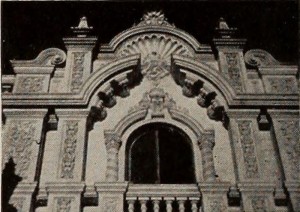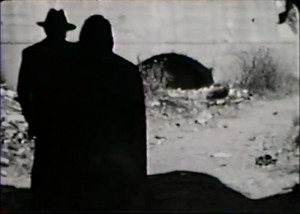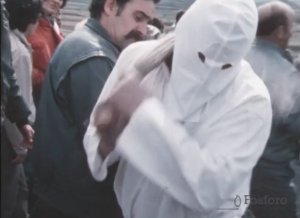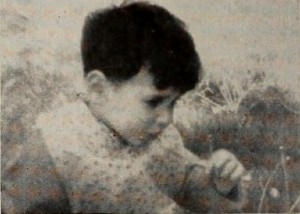
"Item is a film production of Dr. and Mrs. Willinsky's trip to Lima, Peru to attend the 5th International Assembly of the International College of Surgeons. Footage of assembly delegates, landmarks and the local population are interspersed with captions added by Dr. Willinsky. Included are scenes of assembly delegates near Lima's Workman's Hospital, Sadie visiting the home of the assembly's chairman and entering the palace of Peru's president for a luncheon, sights along the streets of San Martin, cathedrals, shots taken from a moving train, and images of the Ricmac River from a nearby road." Ontario Jewish Archives.
"Pets, 350 ft., 16mm., filmed by Dr. F. S. O'Hara, won its position on the list of special mention because of the many remarkably well composed closeups of family pets that it contains and because of the cameraman's patience and skill in securing many delightfully natural bits of action. Included in the film is a sequence of a cat and dog playing together. The film offers much grace and photographic beauty as well as that amazing attractiveness animals always possess on the screen." Movie Makers, Dec. 1931, 686.

"Story of murder during a treasure hunt." Movie Makers, Nov. 1933, 475.
"Phantom of Suicide Gulch, a genuinely exciting Western 'quickie,' by Earl Cochran." Movie Makers, Dec. 1939, 596.
"Sam Fass, having captured some remarkable footage of the Ice Follies in 16mm Kodachrome, set about to weave these shots into an interesting continuity with a logical story line. The director of the ice show summons to his office two likely prospects for one of his ice numbers. When the young women arrive, he projects 16mm movies of his show in order to demonstrate the numbers in which he wishes the girls to take part. When the film ends, the girls agree to join the show and sign contracts -a simple story thread on which the shots of the Ice Follies were deftly strung. The camera work on the Follies numbers is just about tops. Exposure is all anyone could ask for and each number is carefully chronicled and later edited in a slick manner that gives the illusion it all was carefully planned production." American Cinematographer, May. 1952, 222

El filme muestra una procesión católica en la que hombres cargan esculturas de la Virgen y Cristo cargando una cruz. Cientos de personas caminan con ellos, incluyendo unos cuantos hombres vestidos de blanco, con máscaras y la espalda descubierta, que caminan de espaldas mientras se auto-flagelan. Se muestran diversas imágenes de estos hombres golpeándose a sí mismos, gente caminando junto a las estatuas y un hombre con una máscara blanca y una túnica café que muestra una cruz en la espalda; este hombre en particular camina sin zapatos y con cadenas alrededor de sus pies. Casi al final del filme, los hombres vestidos de blanco van ante un sacerdote que pica sus espaldas con un pequeño instrumento hasta que sangran, para después continuar auto-flagelándose. La película termina con imágenes de la procesión aún avanzando.
The film shows a Catholic procession in which men carry sculptures of the Virgin and of Christ carrying a cross. Hundreds of people walk along with them, including a few men all dressed in white, with white masks and their backs uncovered, that walk backwards while they are self-flagellating. The film contains several images of this men beating themselves, people walking along with the statues and one man with a white mask and a brown gown with a cross on the back; this particular man walks without shoes and has chains around his feet. Almost at the end of the film, the men dressed in white go before a priest that punctures their backs with a small instrument until they bleed, afterwards, the continue to self-flagellate. The movie finishes with images of the procession still advancing.

"Irwin Sharpe and Cye Landy have gone back to film beginnings in composing their engaging little etude, Picnic. The fundamental of their selection is the old reliable device of the chase sequence. Beginning quietly with a simple family picnic, the producers soon overlay on this bucolic subject a mysterious kidnapping and its resultant chase. The cutting, camera positions and tempo of this climactic sequence show a true understanding of cinematic expression." Movie Makers, Dec. 1947, 538-539.
"Film depicts a club picnic held at a Eaton Hall Farm. Film includes title cards. Footage includes families at picnic, playing games, canoeing, swimming and people filming with motion picture cameras" Archives of Ontario.
Total Pages: 299